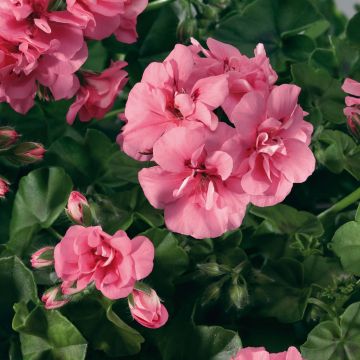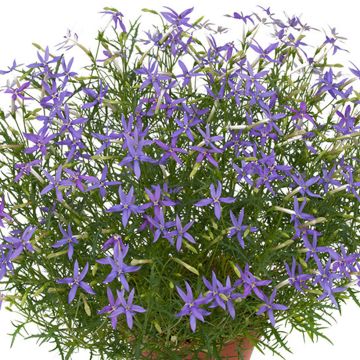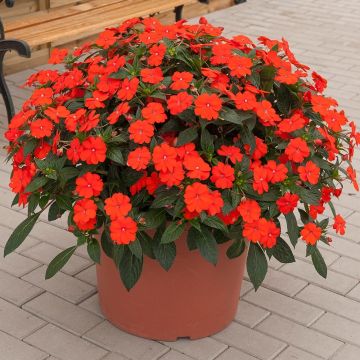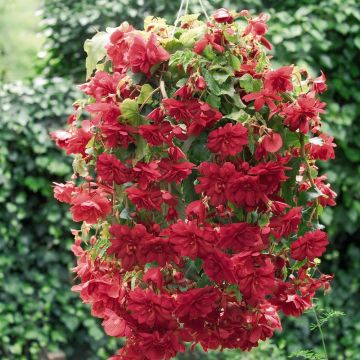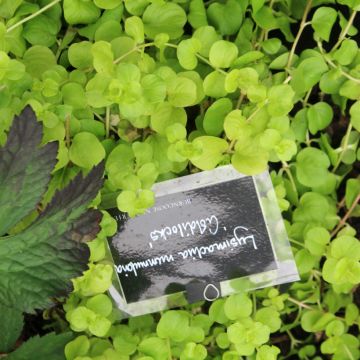

Tagetes patula Durango Yellow


Tagetes patula Durango Yellow
Tagetes patula Durango Yellow
Tagetes patula Queen jaune vif
French Marigold, Marigold, Bonanza
This item cannot be shipped to the selected country
Delivery charge from €5.90
Delivery charge from €5.90
More information
Schedule delivery date,
and select date in basket
This plant carries a 6 months recovery warranty
More information
We guarantee the quality of our plants for a full growing cycle, and will replace at our expense any plant that fails to recover under normal climatic and planting conditions.
From €5.90 for pickup delivery and €6.90 for home delivery
Express home delivery from €8.90.
From €5.90 for pickup delivery and €6.90 for home delivery
Express home delivery from €8.90.
Does this plant fit my garden?
Set up your Plantfit profile →
Description
The annual marigold 'Durango Yellow', in Latin Tagetes patula, has double flowers of an absolutely pure, intense golden yellow, perfectly set off by a beautiful, aromatic, dark green, deeply cut foliage. Carried at the end of strong stems, they bloom from late spring to late summer. Flowers and foliage are perfect for bouquets and brighten up containers and borders deserted by other blooms. This compact variety, branching from the base, will look great in any garden, from the simplest to the most elaborate. To be grown in well-drained soil, in full sun or partial shade.
The Tagetes patula 'Durango Yellow' is an annual herbaceous plant from the aster family, native to the tropical regions of the Americas, from Mexico to Bolivia. It quickly forms a small bushy clump, branching from the base, 23 cm (9.1 in) tall and 30 cm (11.8 in) in diameter, covered with dark green, deeply cut, strongly aromatic foliage, a scent that is not all that pleasant. The flowering period extends from June to October, if deadheaded regularly. 'Durango Yellow' comes under in the anemone-flowered tagetes heading. It has magnificent, perfectly arranged double heads of a very pure bright yellow, right down to the centre of the flower. This plant self-sows easily in the garden, but not always true to type.
Marigolds are star plants in summer beds. They are sometimes criticized for their garish colors and prim habit, but they are so cheerful, easy to grow, and flower so well that it would be a shame not to enjoy them in borders and containers. They can be planted in small groups amidst the grey foliage of artemisias, stachys and ageratums, or surrounded by greenery by combining them with tansies, Kochia Childsii, or small grasses to temper their flamboyant colours. Marigold is also an edible flower that can be enjoyed in salads, soups, or desserts. Some say its flavour is reminiscent of passion fruit.
The smell of marigold foliage, and the substances secreted by their roots repel certain pests harmful to crops, which is why these plants are often planted in the vegetable garden.
Note: Please be aware that our young plug plants are professional products intended for experienced gardeners: upon receipt, transplant and store them under cover (conservatory, greenhouse, cold frame...) at a temperature above 14°C/57.2°F for a few weeks before being installed outdoors once the risk of frost has passed.
Report an error about the product description
Tagetes patula Durango Yellow in pictures


Flowering
Foliage
Plant habit
Botanical data
Tagetes
patula
Queen jaune vif
Asteraceae
French Marigold, Marigold, Bonanza
Cultivar or hybrid
Other Annuals A to Z
Planting and care
Marigolds are fast-growing plants that thrive in sunny and warm conditions. Plant them in fertile, well-drained, and light soil. Avoid excessive watering in summer, as it promotes the development of fungal diseases and root rot. Deadhead regularly to prolong flowering. Protect the plants from slugs and snails, which are very fond of them.
Planting period
Intended location
Care
-
, onOrder confirmed
Reply from on Promesse de fleurs
Plug plants - Annuals
Haven't found what you were looking for?
Hardiness is the lowest winter temperature a plant can endure without suffering serious damage or even dying. However, hardiness is affected by location (a sheltered area, such as a patio), protection (winter cover) and soil type (hardiness is improved by well-drained soil).

Photo Sharing Terms & Conditions
In order to encourage gardeners to interact and share their experiences, Promesse de fleurs offers various media enabling content to be uploaded onto its Site - in particular via the ‘Photo sharing’ module.
The User agrees to refrain from:
- Posting any content that is illegal, prejudicial, insulting, racist, inciteful to hatred, revisionist, contrary to public decency, that infringes on privacy or on the privacy rights of third parties, in particular the publicity rights of persons and goods, intellectual property rights, or the right to privacy.
- Submitting content on behalf of a third party;
- Impersonate the identity of a third party and/or publish any personal information about a third party;
In general, the User undertakes to refrain from any unethical behaviour.
All Content (in particular text, comments, files, images, photos, videos, creative works, etc.), which may be subject to property or intellectual property rights, image or other private rights, shall remain the property of the User, subject to the limited rights granted by the terms of the licence granted by Promesse de fleurs as stated below. Users are at liberty to publish or not to publish such Content on the Site, notably via the ‘Photo Sharing’ facility, and accept that this Content shall be made public and freely accessible, notably on the Internet.
Users further acknowledge, undertake to have ,and guarantee that they hold all necessary rights and permissions to publish such material on the Site, in particular with regard to the legislation in force pertaining to any privacy, property, intellectual property, image, or contractual rights, or rights of any other nature. By publishing such Content on the Site, Users acknowledge accepting full liability as publishers of the Content within the meaning of the law, and grant Promesse de fleurs, free of charge, an inclusive, worldwide licence for the said Content for the entire duration of its publication, including all reproduction, representation, up/downloading, displaying, performing, transmission, and storage rights.
Users also grant permission for their name to be linked to the Content and accept that this link may not always be made available.
By engaging in posting material, Users consent to their Content becoming automatically accessible on the Internet, in particular on other sites and/or blogs and/or web pages of the Promesse de fleurs site, including in particular social pages and the Promesse de fleurs catalogue.
Users may secure the removal of entrusted content free of charge by issuing a simple request via our contact form.
The flowering period indicated on our website applies to countries and regions located in USDA zone 8 (France, the United Kingdom, Ireland, the Netherlands, etc.)
It will vary according to where you live:
- In zones 9 to 10 (Italy, Spain, Greece, etc.), flowering will occur about 2 to 4 weeks earlier.
- In zones 6 to 7 (Germany, Poland, Slovenia, and lower mountainous regions), flowering will be delayed by 2 to 3 weeks.
- In zone 5 (Central Europe, Scandinavia), blooming will be delayed by 3 to 5 weeks.
In temperate climates, pruning of spring-flowering shrubs (forsythia, spireas, etc.) should be done just after flowering.
Pruning of summer-flowering shrubs (Indian Lilac, Perovskia, etc.) can be done in winter or spring.
In cold regions as well as with frost-sensitive plants, avoid pruning too early when severe frosts may still occur.
The planting period indicated on our website applies to countries and regions located in USDA zone 8 (France, United Kingdom, Ireland, Netherlands).
It will vary according to where you live:
- In Mediterranean zones (Marseille, Madrid, Milan, etc.), autumn and winter are the best planting periods.
- In continental zones (Strasbourg, Munich, Vienna, etc.), delay planting by 2 to 3 weeks in spring and bring it forward by 2 to 4 weeks in autumn.
- In mountainous regions (the Alps, Pyrenees, Carpathians, etc.), it is best to plant in late spring (May-June) or late summer (August-September).
The harvesting period indicated on our website applies to countries and regions in USDA zone 8 (France, England, Ireland, the Netherlands).
In colder areas (Scandinavia, Poland, Austria...) fruit and vegetable harvests are likely to be delayed by 3-4 weeks.
In warmer areas (Italy, Spain, Greece, etc.), harvesting will probably take place earlier, depending on weather conditions.
The sowing periods indicated on our website apply to countries and regions within USDA Zone 8 (France, UK, Ireland, Netherlands).
In colder areas (Scandinavia, Poland, Austria...), delay any outdoor sowing by 3-4 weeks, or sow under glass.
In warmer climes (Italy, Spain, Greece, etc.), bring outdoor sowing forward by a few weeks.



































